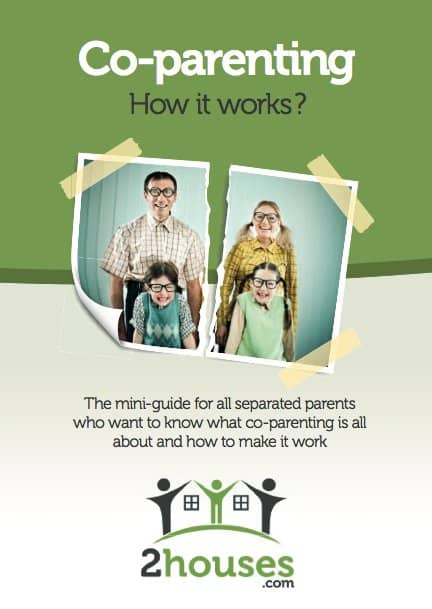Having high self-esteem is something that everyone needs, but something that is not necessarily easy to come by. Children especially need help developing high self-esteem, because low self-esteem can manifest into problems such as depression, eating disorders and, in extreme cases, even suicide. As a parent, one of your many jobs relating to your child is to help build up your child’s self-esteem. It’s important to really listen to your child and value what he is saying. You also want to avoid criticizing or belittling your child, as this can lay the groundwork for low self-esteem. Teach by example; by showing your child that you have strong self-esteem you can pave the way for him to follow in your footsteps. These 20 blog articles will give you the tools you need to help improve your child’s self-esteem.
Techniques
Showing pride in your child’s accomplishments will help him feel pride in himself. Listen and respect your child when he’s talking to you, just as you would want him to respect you when you are talking. Empower your child by giving him choices and letting him run with whatever he chooses. These five blog posts will explain different techniques that can help you improve your child’s self-esteem.
- How to Improve a Child’s Self-Esteem You’ll find advice and suggestions on how to help improve your child’s self-esteem in this post.
- Self-Esteem in Children: Are You Damaging Your Children’s Self-Esteem? Ask yourself the questions posed in this blog post to see if you need to make a change in your behavior.
- How to Improve Your Child’s Self-Esteem Follow this list of techniques to help your child improve how he sees himself.
- Stop and Listen to Children Show your child respect and he will respect himself.
- How Parents Can Improve Their Child’s Self-Esteem? Praise your child and make sure you give him choices so that he feels empowered.
ADHD
When a child has Attention Deficit Hyperactivity Disorder (ADHD) he may feel like there is something wrong with him when he compares himself to his peers. As a parent, it’s important that you help your child see his ADHD in a positive way. This is another opportunity to lead by example. Learn more about how to improve the self-esteem of children with ADHD through these five posts.
- Enhancing Self-Esteem of Children with Attention Deficit Hyperactivity Disorder It’s not unusual for a child with ADHD to compare himself to his classmates. These comparisons can make him feel poorly, so it’s important to learn what you can do to change those feelings.
- Best Sports for Kids with ADHD Excelling in sports can improve your child’s self-esteem, as noted in this post.
- Kids and ADHD Often kids with ADHD feel that they are broken; the important task for the parent is to turn ADHD into a strength instead of a defect.
- 10 Ways Pets Improve Your Health Taking care of a pet will help a child with ADHD to be more responsible, and the love of the pet will improve his self-esteem.
- Your Brain is a Ferrari Help your child understand that his brain is a gift. When he understands that, he will be better able to work with it, allowing him to go much farther in life.
Social Skills
Children with low self-esteem often isolate themselves, which makes the situation worse. Because of this, it’s important that you help your child improve his social skills and make some friends. Having friends will give him a better outlook on life, which will help his self-esteem improve. For more tips like these, look at these five blog posts.
- Improving a Child’s Social Skills Teaching your child how to make and keep friends will help improve self-esteem.
- Self-Esteem and Social Competence of the Adopted Child The relationship a child has with his father and his mother are important for different social reasons.
- Getting Sporty By getting involved in sports, your child will learn social skills. This can, in turn, help improve his self-esteem.
- 10 Reasons to Add a Pet to the Family this Summer There are many benefits that stem from taking care of a pet, which can help your child improve his self-esteem.
- Is My Child in Danger of Becoming a Bully Bullies often have a low self-esteem; you’ll want to watch for the warning signs outlined in this post to make sure that your child isn’t a potential bully.
Teenagers
The teenage years are formative years that can be very difficult for teenagers to navigate through. Teens are often unkind to each other, and your self-esteem can suffer when you are the one being ignored or talked. As a parent, it’s important that you keep the lines of communication open with your teen. Try not to judge when your teen tells you what is going on with her. Take a look at these five blog articles to read more about what you can do to help improve your teenager’s self-esteem.
- Four Helpful Thoughts for Kids & Teens to Build Self-Esteem By teaching your child to reframe negative self-talk, their self-esteem should improve.
- Improve Self-Esteem in Teenagers Sometimes self-esteem can be improved simply by spending more time with your teenager.
- Self-Esteem Building for Teens: Summer Activities Staying active and taking part in certain activities can help improve your teen’s self-esteem.
- Improving Your Teenager’s Self-Esteem With all of the changes that occur during the teenager years, it can be a difficult time to navigate through. Learning to deal with these changes can help with self-esteem.
- Improving Your Child’s Self-Esteem Through Exercise Regular exercise can improve self-image, which can go a long way to improving self-esteem.


